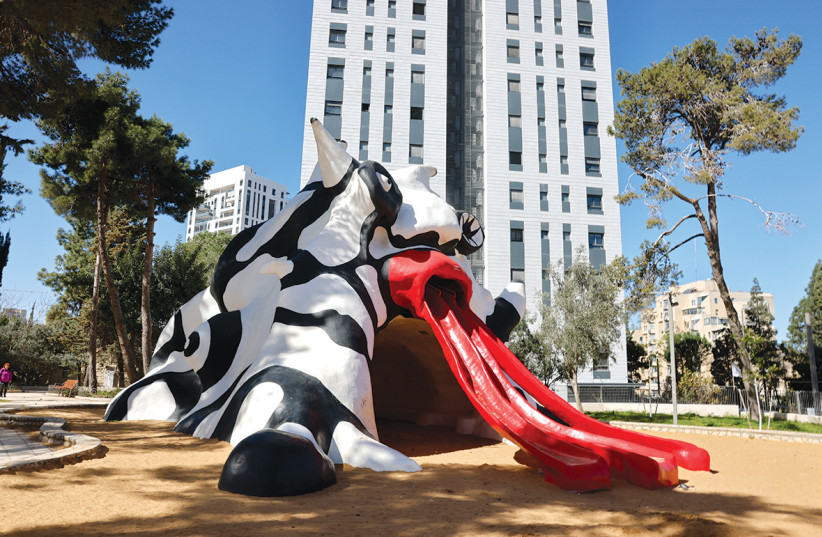
Situated on the southwestern slopes of Jerusalem, the neighborhood of Kiryat Hayovel stands as a symbol of Jerusalem’s singular place in the hearts of world Jewry and our desire to come and settle the Holy Land.
A home for those in need
Established in 1952 to house thousands of Jews from Arab countries who fled their homes when Israel was founded, Kiryat Hayovel was named in honor of the Jewish National Fund’s (Keren Kayemet LeYisrael) 50th anniversary. In the suburb’s early days, tents were erected for the incoming immigrants, and government housing projects eventually provided them with a permanent home.
As Israel’s capital continues to expand, Kiryat Hayovel has evolved into a neighborhood characterized by bustling streets, lively markets, and a close-knit community. Kiryat Hayovel offers residents a blend of residential areas, commercial spaces, and green parks. The neighborhood has become an attractive home for new families and young professionals looking to move away from the city’s more expensive areas.
One of the defining features of Kiryat Hayovel is its remarkable diversity. Home to a mix of Jewish, Arab, and Christian residents, including those of Ethiopian, Eastern European, and Middle Eastern heritage, the neighborhood embodies the multicultural fabric of Jerusalem. Walking through its streets, one can hear a symphony of languages, taste a variety of cuisines, and experience the warmth of different cultural traditions.
In addition to its bustling marketplace, Kiryat Hayovel boasts a range of amenities and recreational facilities that cater to the needs of its residents. The neighborhood is home to schools, community centers, sports clubs and playing fields, and religious institutions, thus providing opportunities for education, leisure, and spiritual fulfillment. Its parks offer residents a respite from the hustle and bustle of city life, serving as gathering places for families, children, and outdoor enthusiasts.

‘The Monster’
Ask Jerusalemites about the Mifletzet (monster), and they will most likely chuckle and recall their most recent visit there – and what fun it was.
Constructed in 1971 by French artist Niki de Saint Phallehe, the renowned and distinctive landmark is located in Rabinovich Park. The sculpture-cum-children’s slide is an imposing structure, characterized by its bold colors and unconventional design, which resembles a melted Holstein cow.
At the heart of its allure lies its functionality as a children’s play thing, featuring three tongue-shaped slides that emerge from the Mifletzet’s mouth. Generations of Jerusalemite children have found joy in exploring this whimsical structure, going down its slides and reveling in its playful ambiance.
Pain and hope
Despite its vibrant atmosphere, Kiryat Hayovel has faced many challenges over the years. Like many neighborhoods in Jerusalem, it has grappled with issues such as socioeconomic disparities, infrastructure development, and tensions arising from the Israeli-Palestinian conflict.
On March 29, 2002, a suicide bombing was carried out by 18-year-old Ayat al-Akhras, who blew herself up at the entrance to the neighborhood’s main supermarket, killing three other people and wounding 28.
Looking ahead, the future of Kiryat Hayovel appears promising, fueled by the energy and creativity of its diverse population. The municipality has already green-lighted several construction projects to modernize Kiryat Hayovel, providing thousands of new housing units to those moving in. New plans for green spaces and a more pedestrian-friendly neighborhood mark Kiryat Hayovel as a place to turn to for Jerusalem’s inhabitants.
Through resilience and community solidarity, residents of Kiryat Hayovel have continued to overcome these challenges and build a brighter future for themselves and next generations.■
Population:
- 25,000
Avg. Real Estate:
- Home (buy) – NIS 2.4 million
- Apt. (rent) – NIS 4,300/mo.
